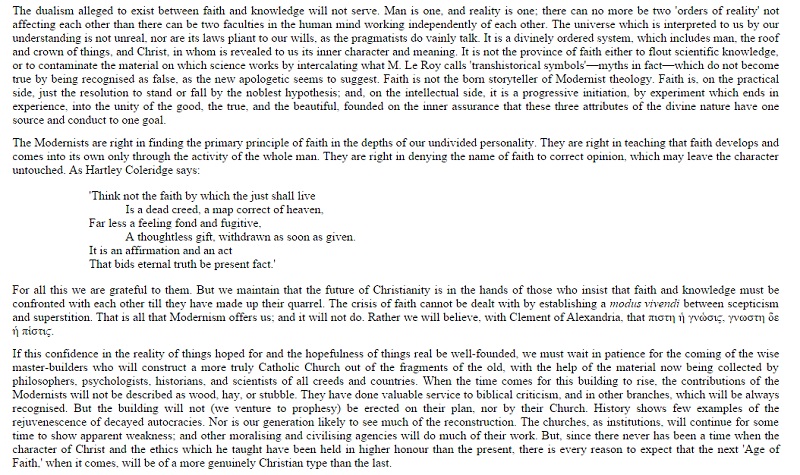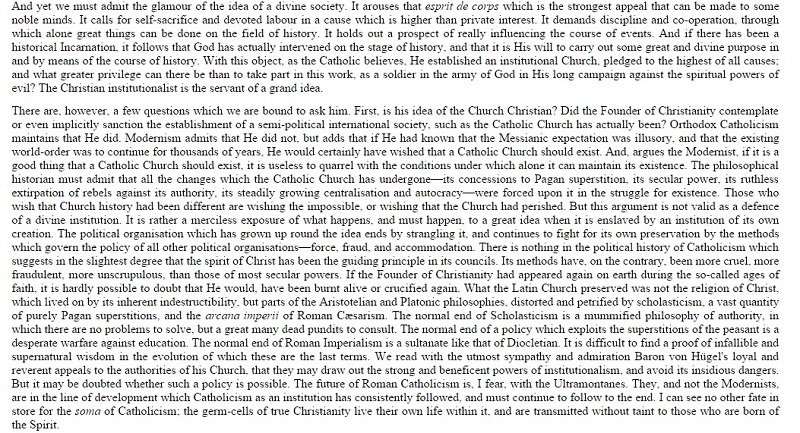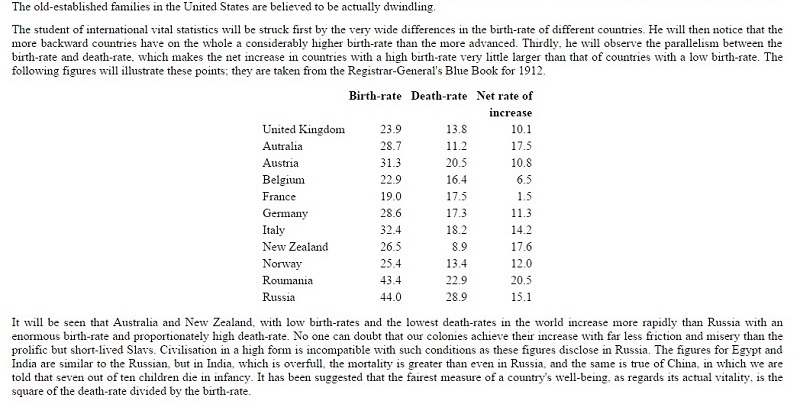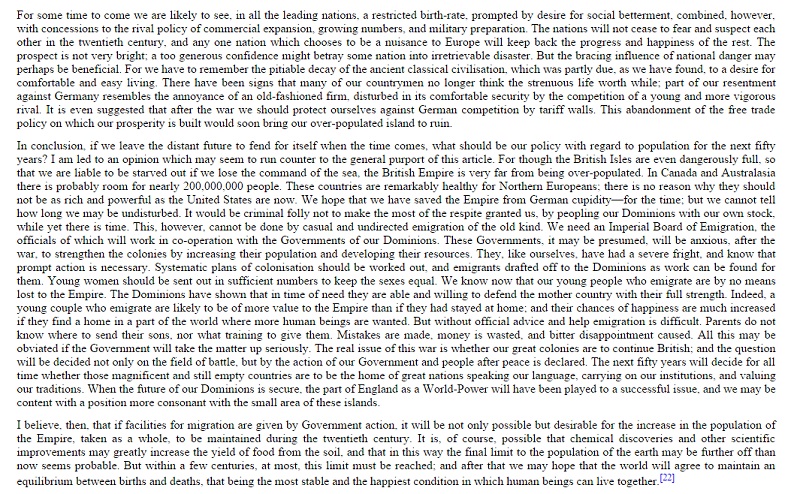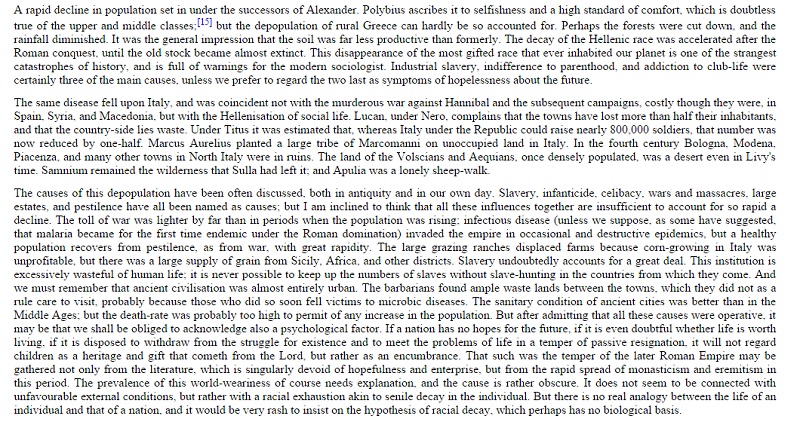Dean Inge, ‘Roman Catholic Modernism’ [1909], in Outstanding Essays (1920)
[Source: William Ralph Inge [Dean of St. Paul’s] Outstanding Essays (London: Longmans, Green & Co. 1920) - available online.]
Richard Ellmann writes of Yeats: ‘The dream is no longer a beautiful refuge; the symbols of a Vision may comfort by their coherence, but they are not beautiful and can hardly be called a refuge because they [do not?] represent reality and without reality are nothing. Symbolism became Yeats’s method because he could not otherwise have written; the symbol enabled him to escape uncertainty, to partake of the advantages of both dream and reality […] To borrow a phrase of Dean Inge in another context, the symbol was “a modus vivendi between scepticism and superstition”.’ (Yeats: The Man and the Masks, London: Faber 1948, p.294.)
Remarks In the course of his remarks upon A Vision, Ellmann offers an appraisal:
Symbolism became Yeats’s method because he could not otherwise have written; the symbol enabled him to escape uncertainty, to partake of the advantages of both dream and reality [...] To borrow a phrase of Dean Inge in another context, the symbol was “a modus vivendi between scepticism and superstition”. [1]
We now know that Dean Inge is the immediate source of Yeats’s ringing phrase ‘formless darkness’ from the third-century Greek Sophist Antoninus to be met with in A Vision (1925) in the apocalyptic sentence, "the world became Christian and “that fabulous formless darkness” as it seemed to a philosopher of the fourth century, blotted out “every beautiful thing”, [2] and also in the poems “Two Songs for a Play”: ‘The Babylonian starlight brought / A fabulous, formless darkness in; / Odour of blood when Christ was slain / Made all Platonic tolerance vain / And vain all Doric discipline’ [CP, 240; 3], though fabulous is his own antinomian addition — oddly akin with terrible in ‘terrible beauty is born’. Neil Mann has recently located it in Inge’s The Philosophy of Plotinus, which now stands with the rest of Yeats’s book-collection in the National Library of Ireland. [3] It happens that Inge is also the source of Ellmann’s phrase, though (unlike the other), the one in which it occurs was not in Yeats’s library, unless Ellmann borrowed and failed to return it: an essay on “Roman Catholic Modernism” of 1909, collected in Inge’s Outstanding Essays of 1920. [4]. Inge’s idea is an obvious correlate of Yeats’s central theme that truth can only be embodied, not known.
Notes
2. A Vision (1925), ed. Catherine E. Paul & Margaret Mills Harper, Collected Works of W. B. Yeats, Vol. 13 (2008), p.158.
3. See A. N. Jeffares, A New Commentary on the Poems of W. B. Yeats (London: Macmillan 1988), p.240, where the songs are identified with The Ressurrection (1934; pub. 1936) and are shown to have a complex publishing history - written 1926 and 1930-31, published in various parts in 1927 and 1931 and 1939.
4. See Neil Mann, ‘A Vision (1925): A Review Essay’, in The Living Stream: Yeats Annual 18, ed. Warwick Gould (2013), p.281. The source was previously thought to be E. R. Dodds’s Select Passages Illustrating Neo-Platonism (1923) - an attribution ascribed to Richard Finneran in Yeats’s Poems: A New Edition (1984) in Jeffares, op. cit., 1988 [see n.3.].
5. Inge writes: ‘The Modernists are right in finding the primary principle of faith in the depths of our undivided personality. They are right in teaching that faith develops and comes into its own only through the activity of the whole man. They are right in denying the name of faith to correct opinion, which may leave the character untouched.’ (Outstanding Essays, London: Longmans, Green & Co. 1920; available at Gutenberg Project on internet [n.p]. )[BS: 22.04.2015] See source of the quotation from W. R. Inge - infra; and also Neil Mann’s account of Yeats’s indebtedness to Inge for the phrase “formless dark” in A Vision (1925) and also in “Two Songs for a Play” also - infra.]
See also Bibliographical note on NLI holdings of Inge’s works including The Philosophy of Plotinus (1918), formerly in Yeats’s personal library [YL/NLI] - infra.
§
From William Ralph Inge [Dean of St. Paul’s], Outstanding Essays (1920)
“Roman Catholic Modernism” (1909) ‘[...] The Modernists are right in finding the primary principle of faith in the depths of our undivided personality. They are right in teaching that faith develops and comes into its own only through the activity of the whole man. They are right in denying the name of faith to correct opinion, which may leave the character untouched. As Hartley Coleridge says:
“Think not the faith by which the just shall live / is a dead creed, a map correct of heaven, Far less a feeling fond and fugitive, / A thoughtless gift, withdrawn as soon as given. / It is an affirmation and an act / That bids eternal truth be present fact.”
For all this we are grateful to them. But we maintain that the future of Christianity is in the hands of those who insist that faith and knowledge must be confronted with each other till they have made up their quarrel. The crisis of faith cannot be dealt with by establishing a modus vivendi between scepticism and superstition. That is all that Modernism offers us; and it will not do. Rather we will believe, with Clement of Alexandria, that πιστη ἡ γνὡσιϛ, γνωστη δε ἡ πἱστιϛ. [several unrecognised ASCII chars.; our underlining]
If this confidence in the reality of things hoped for and the hopefulness of things real be well-founded, we must wait in patience for the coming of the wise master-builders who will construct a more truly Catholic Church out of the fragments of the old, with the help of the material now being collected by philosophers, psychologists, historians, and scientists of all creeds and countries. [...]’
[page image]
(q.pp.; available at Gutenborg Project - online; access 22.04.2015.) Other essay-titles incl. “Cardinal Newman” (1912), “Institutionalism and Mysticism” (1914), “Survival and Immortality” (1917) and “The Future of the English Race” (Galton Lect., 1919). See also his essay on “The Birth Rate” (1917) - as below.]
Some snap-shots ... “Roman Catholic Modernism” (1909) “The Birth Rate” (1917) [cont.]
[cont.]
[Available at Gutenborg Project - online; access 22.04.2015.]
Neil Mann, “A Vision (1925) A Review Essay”, in Yeats Annual, [Sect.:] Mastering what is most Abstract: A Forum on A Vision”, in Yeats Annual, ed. Warwick Gould (2013), p.281: ‘Commenting onon the quotations contained in the comment that “the world became Christian and “that fabulous formless darkness” as it seemed to a philosopher of the fourth century, blotted out “every beautiful thing”. (CW, 13, 158), the editors [of A Vision Papers] open their note with reference to Ellmann’s and Jeffares’s attribution of the quotation to Proclus (CW13, 301; cf. CVA Notes 52), but if they must refer to this ascription at all, it should be to derogate it rather than to offer it as the first comment and leave the name in the [281] reader’s mind unchallenged. Even Homers nod. However, the alternative offered, E. R. Dodds’s Select Passages Illustrating Neo-Platonism (1923), though it correctly identifies the source in Eunapius, is unlikely to be the route by which Yeats found it. [Notes that Brian Arkins also cites Dodds in Notes & Queries, 32 (1985)] The phrase is singled out in Yeats’s prime source for A Vision’s material on the Great Year and antiquity, The Encyclopedia of Religion and Ethics (YL 855), in William R. Inge’s article on Neo-platonism which notes: “One of the 4th century Neo-Platonists, Antoninus [sic], predicted plaintively that “a fabulous and formless darkness is about to tyrannize over all that is beautiful on earth.” (38). Dean Inge repeated himself even more evocatively in his Gifford Lectures on The Philosophy of Plotinus (YL 954):
‘Pagan apologists were not slow to ascribe the decay of civilisation to the “third race”, the adherents of the new faith. Modern historians too, lamenting the wreck of the ancient culture and the destruction of its treasures in the stormy night of the Dark Ages, have felt a thrill of sympathy with the melancholy prophecy of a certain Antoninus, son of Eustathius, that soon “a fabulous and formless dark shall tyrannise over the fairest things on earth.”’ [n.39.]
There is no doubt that W. B. Yeats felt that thrill of sympathy and his rephrasing seems to draw the translations of the final phrase [Greek] together in a novel way.’ [here p.281; available online.]
Notes 38. Inge, “Neo-Platonism”, in The Encyclopaedia of Religion and Ethics, ed. James Hastings, Vol. XVII, [q.d.] p.317.
39. Inge, The Philosophy of Plotinus: The Gifford Lectures at St Andrews, 1917-1918, [London:] Longmans, Green, 1918, I, 26. Yeats’s copy contains marginial referring to A Vision. (YA, p.282.)Cf. A. N. Jeffares, A New Commentary on the Poems (London: Macmillan 1988) - Note on “Two Songs for a Play”: PNE [Poems: New Edition, ed. R. Finneran] draws on E. R. Dodds, Selected Passages Illustrating Neo-Platonism (1923) for the Greek Sophist Eunapius (?347-420) who recounts (see Philostratus and Eunapius, The Lives of the Sophists, trans. Walmer Cave Wright, 1922, p.417) how Antonius [sic] (?290) foretold that as a result of Christianity the temple would cease to be and even the great and holy temples of Serapis would pass into “formless darkness” and be transformed and that “a fabulous and unseemly gloom would hold sway over the fairest things on earth.”’ (Jeffares, p.241.)
[ top ]
Bibliographical note
Works by and about W. R. Inge held in National Library of Ireland [NLI] Works:
- Lay Thoughts of a Dean (1926).
- More Lay Thoughts of a Dean [c1932].
- Diary of a Dean, St. Paul’s, 1911-1934 [1949].
- Is It a New World?: A series of articles and letters contributed by correspondents to the Daily Telegraph, August-September, 1920..
- Outspoken essays (London: Longmans, Green, 1921). x, 281pp.
- Our Present Discontents (Putnam 1938), 351pp.
- Plotinus by the Very Rev. W.R. Inge (London; Humphey Milford, 1929), 27pp. [prev. in Proceedings of the British academy, Vol.XV (London [1932]) [19]-43pp.
- The Philosophy of Plotinus: The Gifford lectures at St. Andrews, 1917-1918 (London: Longmans, Green & Co., 1918) [YL 954/1-2].
- Christian Mysticism: considered in eight lectures delivered before the University of Oxford [Bampton Lectures] (London: Methuen & Co. 1899.), xv, 379pp.
Contribs.
- [J. H. Whitehouse, ed.], Ruskin the Prophet, and other Centenary Studies [1920], incls. Introduction by J. H. Whitehouse, Ruskin by John Masefield, Ruskin and Plato by Dean Inge [... et. al.].
- Desmond MacCarthy, ed. Criticism [1932], incls. [...] Samuel Butler, George Santayana, Dean Inge, Boswell, John Donne, William Collins, Robert.
- Hesketh Pearson, Modern Men and Mummers (London: George Allen [1921]), incls. chap.-essay Dean Inge, with others on Lewis Waller, Winston Churchill, Joseph Conrad, Mrs. Patrick Campbell [&c.]; in Coll. of Joseph Holloway.
